1. Introduction
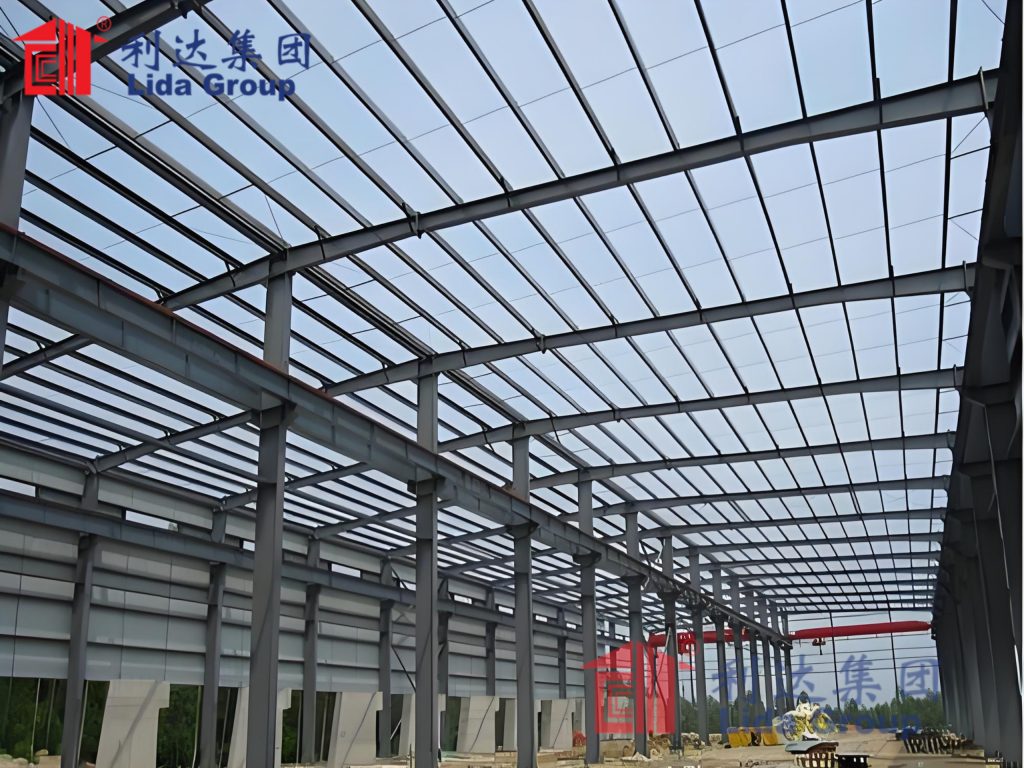
2. The Rising Demand for Smart Metal Buildings: Industry Context and Driver
2.1 Operational Efficiency: A Top Priority for Commercial and Industrial Clients
2.2 Sustainability Mandates and Environmental Goals
2.3 The Need for Adaptability in a Changing World
2.4 User Experience: A Growing Concern for Residential and Commercial Clients

3. Key Smart Technologies Integrated into Lida Group’s Metal Buildings
3.1 IoT-Enabled Monitoring and Control Systems
3.1.1 Energy Monitoring and Optimization
Real-Time Energy Tracking: Sensors monitor electricity, gas, and water use, providing clients with detailed reports on where and when energy is being consumed. For example, a warehouse client might discover that 40% of their energy use comes from unused lighting in empty zones.
Automated Adjustments: The system can automatically adjust lighting, HVAC, and other energy-intensive systems based on occupancy or time of day. For instance, lights in a manufacturing facility can turn off when sensors detect no movement for 15 minutes, and HVAC systems can lower temperatures during night shifts when fewer workers are present.
Solar Integration: For clients with solar panels (a common add-on for Lida Group’s metal buildings), IoT sensors track panel performance, ensuring maximum energy output. The system can even predict weather patterns to optimize solar energy use—for example, increasing battery storage on cloudy days.
3.1.2 Structural Health Monitoring
Load and Stress: Sensors embedded in steel beams monitor weight distribution, alerting clients if snow or equipment loads exceed safe limits. For example, a client in Canada received an alert when snow accumulation on their warehouse roof reached a critical level, allowing them to clear it before damage occurred.
Temperature and Humidity: Sensors track internal and external temperatures, preventing issues like condensation (which can cause rust) or extreme heat (which can warp metal components).
Vibration: For industrial clients with heavy machinery, vibration sensors detect abnormal movement, which can indicate equipment malfunctions or structural stress.
3.1.3 Security and Access Control
Motion Sensors and Cameras: Wireless IoT cameras and motion sensors monitor the building’s interior and exterior, sending real-time alerts to clients if unauthorized activity is detected. The cameras are integrated with the cloud platform, allowing clients to view footage remotely.
Keyless Entry: Clients can issue digital keys to employees or contractors, which can be revoked remotely if needed. This eliminates the cost of physical keys and reduces the risk of theft from lost or stolen keys.
Fire and Smoke Detection: IoT smoke detectors and heat sensors react faster than traditional alarms, sending alerts to clients and local fire departments within seconds of detecting a hazard.
3.2 Smart Automation for Enhanced Efficiency
3.2.1 HVAC Automation
Occupancy-Based Controls: IoT sensors detect how many people are in a space, adjusting HVAC output accordingly. For example, an office building with 10 employees will use less energy than one with 50.
Weather Adaptive Settings: The system connects to local weather data, adjusting temperatures to account for external conditions. On a cool day, the system might use natural ventilation (via automated windows) instead of air conditioning.
Predictive Maintenance: The system monitors HVAC components (e.g., filters, fans) and alerts clients when maintenance is needed. This prevents breakdowns and ensures the system runs at peak efficiency.
3.2.2 Lighting Automation
Motion-Activated Lighting: Lights turn on only when sensors detect movement, ideal for warehouses, parking lots, and storage areas that are not constantly in use.
Daylight Harvesting: The system adjusts artificial lighting based on natural light levels. For example, lights near windows will dim on sunny days, reducing energy use.
Color Temperature Control: For office or residential clients, the system can adjust lighting color temperature to match circadian rhythms—warmer light in the morning and cooler light in the afternoon—improving productivity and well-being.
3.2.3 Industrial Process Automation
Equipment Monitoring: IoT sensors track machinery performance, providing real-time data on speed, temperature, and output. This helps clients identify bottlenecks and optimize production.
Automated Material Handling: For warehouses and distribution centers, Lida Group can integrate automated conveyor belts and robotic arms that are controlled via the cloud platform. These systems reduce manual labor costs and improve accuracy.
Inventory Tracking: RFID sensors embedded in the building’s metal structure track inventory levels, alerting clients when stock is low or when items are misplaced.
3.3 Renewable Energy Integration
3.3.1 Solar Panel Systems
Roof-Mounted Solar Panels: High-efficiency solar panels are installed directly on the metal roof, connected to a battery storage system and the IoT energy monitoring platform. These panels can meet 50–70% of a building’s energy needs, depending on location.
Building-Integrated Photovoltaics (BIPV): For clients seeking a more seamless design, Lida Group offers BIPV panels that replace traditional metal roof panels. These panels generate electricity while still providing weather protection, eliminating the need for separate solar installations.
3.3.2 Wind Turbines (for Large-Scale Projects)
3.3.3 Geothermal Heating and Cooling
3.4 Smart User Experience Tools
3.4.1 Smart Home/Hospitality Controls
Temperature: Smart thermostats learn user preferences and adjust temperatures automatically, or users can control them via a smartphone app.
Lighting: Users can adjust lighting brightness and color temperature, set schedules, or control lights remotely.
Appliances: For residential clients, the system can connect to smart appliances (e.g., refrigerators, ovens) to monitor energy use and send maintenance alerts.
3.4.2 Keyless Entry and Access Management
Issue Temporary Access: For contractors or visitors, clients can issue temporary digital keys that expire after a set period.
Monitor Access Logs: The system tracks who enters and exits the building, providing clients with a detailed security log.
Remote Lock/Unlock: Clients can lock or unlock doors remotely, ideal for situations where a tenant or employee forgets their key.
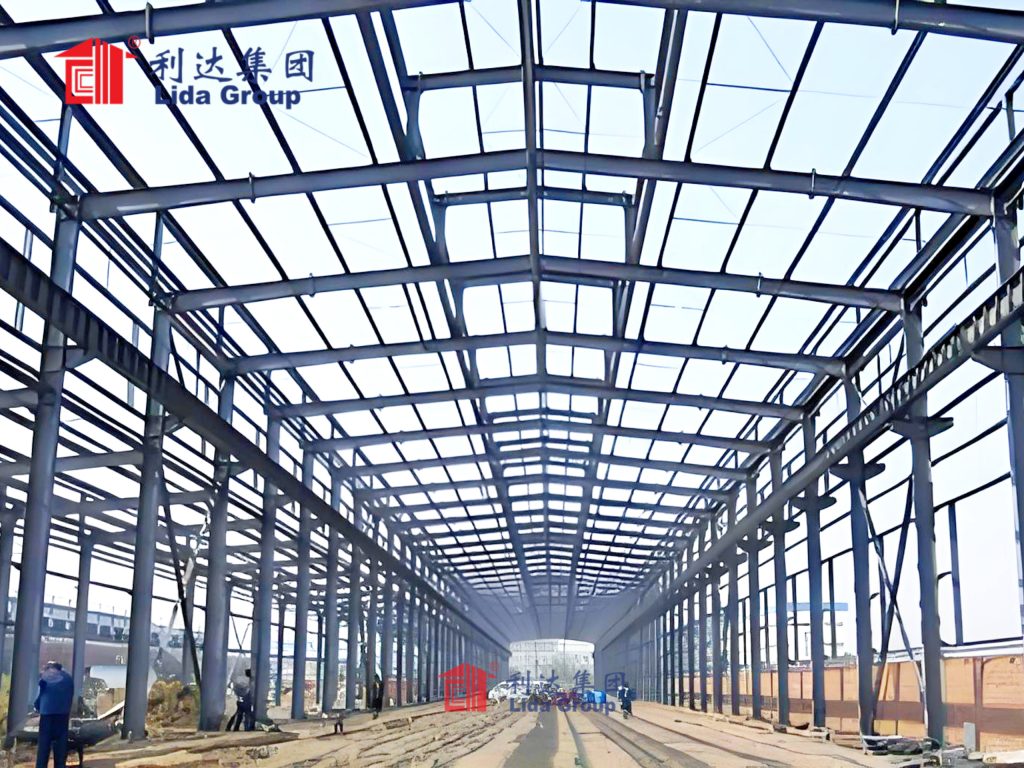
4. Cost-Effectiveness: How Lida Group Keeps Smart Metal Buildings Affordable
4.1 Modular Manufacturing of Smart Components
Pre-Installed Wiring and Sensors: Instead of installing smart sensors and wiring on-site (which requires skilled labor and can lead to delays), Lida Group pre-installs these components in factory-produced metal panels. For example, a wall panel may come with pre-wired IoT motion sensors and lighting controls, ready to be connected to the cloud platform once assembled. This reduces on-site labor costs by 30% compared to retrofitting.
**Standardized Smart Kits
4.2 Bulk Sourcing and Strategic Supplier Partnerships
- Bulk Purchasing of IoT Components: The company purchases IoT sensors, microchips, and cloud platform licenses in massive quantities (millions of units per year). This allows it to negotiate bulk discounts of 20–30% with suppliers. For instance, Lida Group’s annual order of 5 million IoT motion sensors from a Chinese manufacturer costs 22% less per unit than small-scale purchases.
- Long-Term Supplier Relationships: Lida Group has 10+ year partnerships with key technology suppliers, including sensor manufacturers, solar panel producers, and cloud service providers. These partnerships give the company access to preferential pricing, priority delivery, and co-development opportunities. For example, a partnership with a U.S.-based cloud platform provider allows Lida Group to offer its clients a custom-branded monitoring dashboard at 30% below the standard retail price.
- Localized Sourcing: To reduce transportation costs and tariffs, Lida Group sources components from regional suppliers whenever possible. In Europe, for example, the company works with a German sensor manufacturer to supply IoT devices for its European projects—cutting transportation costs by 35% compared to importing from Asia.
4.3 Integration During Design, Not Retrofit
- Smart Design Software: The company uses advanced design software that allows architects and engineers to embed smart components (e.g., sensor locations, wiring paths) into the building’s blueprints from day one. This eliminates the need for costly rework later—such as cutting into metal walls to install wiring.
- Cross-Disciplinary Collaboration: Lida Group’s design teams include both construction experts and technology specialists who work together to ensure that smart systems are seamlessly integrated with the metal structure. For example, a technology specialist will advise on the optimal placement of solar panels to maximize sun exposure, while a structural engineer ensures the metal roof can support the weight—avoiding expensive modifications down the line.
- Pre-Tested Systems: All smart systems are tested in Lida Group’s factories before installation. This ensures that components work together seamlessly and reduces the risk of on-site failures, which can lead to additional costs. A 2024 internal audit found that pre-testing reduces on-site troubleshooting time by 60%, saving clients an average of $5,000 per project.
4.4 Energy and Maintenance Savings That Offset Upfront Costs
- Energy Savings: As highlighted earlier, smart energy systems reduce energy costs by 25–35%. For a 10,000-square-meter warehouse with an annual energy bill of \(100,000, this translates to \)25,000–\(35,000 in annual savings. At this rate, the upfront cost of the smart system (\)10,000–$15,000) is recouped in just 6–8 months.
- Maintenance Savings: Predictive maintenance tools and structural health monitoring reduce maintenance costs by 20–25%. A manufacturing client in India reported cutting maintenance expenses from \(80,000 to \)60,000 per year after installing Lida Group’s smart monitoring system—offsetting the upfront cost in 10 months.
- Reduced Downtime: For industrial clients, unplanned downtime can cost \(10,000–\)100,000 per hour. Lida Group’s predictive maintenance tools detect issues before they cause breakdowns, reducing downtime by 30–40%. A logistics client in Brazil avoided a $50,000 downtime incident when the system alerted them to a failing conveyor belt motor—saving more than the entire cost of the smart system.
4.5 Flexible Pricing and Financing Options
- Tiered Pricing: The company offers three tiers of smart technology integration—Basic, Advanced, and Premium—allowing clients to choose the level of functionality that fits their budget. The Basic tier (for cost-sensitive clients) includes essential tools like energy monitoring and motion sensors, while the Premium tier adds advanced features like solar panels and industrial automation.
- Leasing Options: For clients who prefer to spread costs over time, Lida Group offers leasing agreements for smart technology components. Clients can lease IoT systems and solar panels for a monthly fee—avoiding large upfront investments. A small retail client in Mexico, for example, leases a Basic Energy Savings Kit for \(200 per month—saving \)300 per month on energy costs, resulting in a net monthly gain of $100.
- Government Grant Support: Lida Group helps clients apply for government grants and tax incentives for sustainable and smart construction. In the U.S., for example, the company assisted a warehouse client in securing a $25,000 federal grant for solar panel installation—covering 50% of the upfront cost of the system.

5. Industry Applications: Lida Group’s Smart Metal Buildings Across Sectors
5.1 Industrial and Manufacturing Facilities
- Industrial Process Automation: IoT sensors and automated conveyor systems streamline production, reducing labor costs and improving accuracy.
- Structural Health Monitoring: Sensors track vibration and load to ensure the metal structure can support heavy equipment.
- Energy Optimization: Smart HVAC and lighting systems reduce energy use in large facilities.
5.2 Warehouses and Logistics Centers
- Inventory Tracking: RFID sensors and IoT cameras track stock levels and prevent theft.
- Occupancy-Based Lighting: Motion sensors ensure lighting is only used in active zones, reducing energy waste.
- Remote Security Monitoring: Cloud-connected cameras allow clients to monitor the warehouse 24/7 from anywhere.
5.3 Commercial Buildings (Offices, Retail, Hotels)
- Smart HVAC and Lighting: Systems that adapt to occupancy and user preferences, improving comfort and reducing costs.
- Keyless Entry and Access Management: Enhances security and convenience for employees and customers.
- Sustainability Features: Solar panels and energy monitoring systems help clients meet green building certifications.
5.4 Residential Buildings (Apartments, Tiny Homes)
- Smart Home Controls: For temperature, lighting, and appliances, accessible via smartphone.
- Energy-Efficient Systems: Solar panels and insulation reduce utility bills.
- Durable Design: Metal structures resist pests, weather, and fire—reducing maintenance costs.
5.5 Agricultural Buildings (Barns, Greenhouses)
- Environmental Monitoring: IoT sensors track temperature, humidity, and CO2 levels in greenhouses.
- Automated Irrigation: Systems that adjust water use based on soil moisture, reducing waste.
- Durable Structures: Metal frames resist pests and harsh weather, protecting livestock and crops.
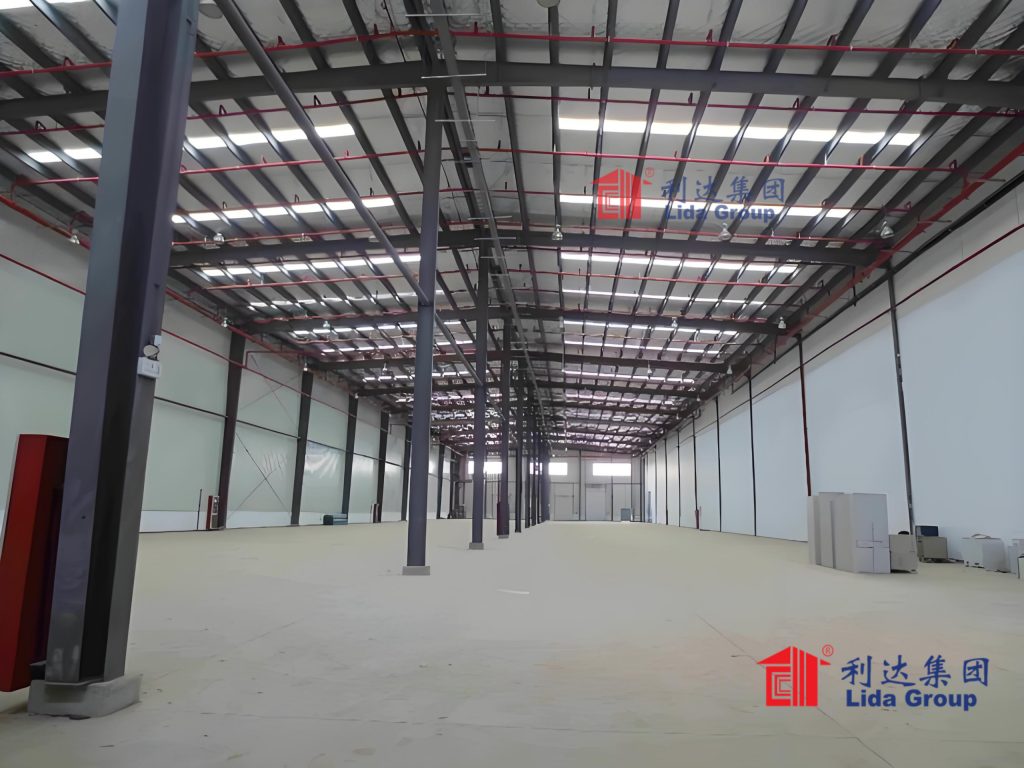
6. Customer Success Stories: Real-World Impact of Lida Group’s Smart Metal Buildings
6.1 Success Story 1: A German Logistics Warehouse Cuts Energy Costs by 35%
- IoT Energy Monitoring Dashboard: Tracks electricity use and identifies waste.
- Motion-Activated Lighting: Turns off lights in empty zones (saving 40% on lighting costs).
- RFID Inventory Tracking: Monitors 80,000+ packages in real time.
- Cloud-Connected Security Cameras: Sends alerts for unauthorized activity.
- Energy Savings: DHL’s annual energy bill dropped from €140,000 to €91,000—a 35% reduction. The smart system paid for itself in just 8 months.
- Inventory Accuracy: Discrepancies fell from 8% to 2%, reducing order fulfillment delays by 30%.
- Security: No theft incidents were reported in the first year after installation—compared to 5 incidents the previous year.
6.2 Success Story 2: A Mexican Retail Store Enhances Customer Experience and Cuts Costs
- Smart Lighting Controls: Adjusts brightness based on natural light and customer traffic.
- Keyless Entry: For employees, reducing key replacement costs.
- IoT Energy Monitoring: Tracks electricity use and suggests savings.
- Energy Savings: The smart lighting and solar system cut energy costs by 32% (from €25,000 to €17,000 per year).
- Customer Experience: Brightness consistency improved, and customer surveys showed a 20% increase in satisfaction.
- Cost Affordability: The €15,000 upfront cost was within budget, and the solar lease generated net savings of €200 per month (€3,600 per year in energy savings minus €1,800 in lease payments).
6.3 Success Story 3: A Canadian Agricultural Greenhouse Boosts Yields and Saves Water
- IoT Environmental Sensors: Monitors temperature, humidity, and CO2 levels in real time.
- Automated Irrigation: Adjusts water flow based on soil moisture data.
- Smart Ventilation: Opens and closes vents automatically to maintain optimal conditions.
- Yield Increase: Crop yields rose by 15% (exceeding industry averages), increasing revenue by €40,000 per year.
- Water Savings: The automated irrigation system cut water use by 40%, reducing costs from €12,000 to €7,200 per year.
- Labor Savings: The automated system reduced the need for manual adjustments, saving the farm €5,000 per year in labor costs.

7. Customer Support: Ensuring Seamless Adoption of Smart Metal Buildings
7.1 Pre-Installation Support
- Custom Consultation: A team of technology and construction experts works with clients to identify their specific needs and recommend the right smart system (e.g., Basic vs. Premium kit). For example, a small warehouse client will receive guidance on which sensors will deliver the most energy savings.
- Training for Teams: Lida Group provides training sessions for client teams (e.g., facility managers, IT staff) to teach them how to use the smart system. Sessions are offered in-person or virtually, and include hands-on practice with the monitoring dashboard.
- Regulatory Guidance: The company helps clients navigate local regulations and apply for grants or tax incentives. For a U.S. client, Lida Group’s team assisted with filling out the paperwork for a federal solar tax credit—saving the client 30% on solar panel costs.
7.2 Installation Support
- Dedicated Project Manager: Each project is assigned a project manager who oversees the installation of smart components and coordinates with the construction team. The project manager provides weekly updates and addresses any issues promptly.
- On-Site Technology Specialists: During installation, Lida Group dispatches technology specialists to ensure that smart systems are set up correctly. For example, a specialist will calibrate IoT sensors to ensure accurate data collection and connect the system to the cloud platform.
- Testing and Quality Assurance: Before handover, the team conducts rigorous testing of all smart systems to ensure they work as expected. This includes testing sensor accuracy, automation triggers, and remote access capabilities.
7.3 Post-Installation Support
24/7 Technical Support: Clients have access to a 24/7 technical support hotline and email service for issues with their smart systems. A logistics client in Brazil, for example, called the hotline at 3 AM when their inventory tracking system failed— a technician resolved the issue remotely within 30 minutes.
Software Updates: Lida Group provides free annual updates to the cloud monitoring platform, adding new features (e.g., improved data analytics) and fixing bugs. Clients are notified
- Annual Maintenance Visits: For Premium tier clients, Lida Group offers annual on-site maintenance visits. A technician inspects smart components (e.g., IoT sensors, solar panels), cleans equipment, and addresses any potential issues. This proactive maintenance extends the lifespan of smart systems by 3–5 years, further reducing long-term costs.

8. Future Trends: Lida Group’s Vision for the Next Generation of Smart Metal Buildings
8.1 AI-Driven Predictive Optimization
- Predict Maintenance Needs: Beyond detecting existing issues, the AI will analyze historical data (e.g., sensor readings, maintenance records) to predict when components are likely to fail—sometimes weeks or months in advance. For example, the AI could forecast that a HVAC fan motor will need replacement in 60 days, allowing the client to order parts and schedule maintenance during a planned shutdown. This will reduce unplanned downtime by 50% or more.
- Optimize Energy Use Proactively: The AI will integrate weather data, occupancy patterns, and energy prices to create personalized energy-saving strategies. For a warehouse in Germany, the AI might recommend pre-cooling the facility overnight (when electricity prices are low) to reduce daytime energy use during heatwaves. Lida Group estimates this will cut energy costs by an additional 15–20% compared to current smart systems.
- Adapt to Changing Usage Patterns: The AI will learn how clients use their buildings and adjust systems accordingly. For example, if a retail store’s foot traffic increases on weekends, the AI will automatically adjust lighting and HVAC to accommodate the higher occupancy—without manual input.
8.2 Advanced Material Integration
- Self-Healing Metal Coatings: Lida Group is partnering with material science firms to develop a self-healing coating for steel components. This coating uses microcapsules that release a protective polymer when the metal is scratched or corroded—preventing rust and extending the building’s lifespan by 10–15 years. The coating will add just 2–3% to the cost of steel components but reduce maintenance costs by 40%.
- Transparent Solar Panels for Metal Roofs: Traditional solar panels are opaque, but Lida Group is testing transparent solar panels that can be integrated into metal roof panels. These panels allow natural light to enter the building (reducing the need for artificial lighting) while generating electricity. For commercial buildings like offices or retail stores, this will double the energy-saving benefits of solar integration.
- Lightweight, High-Strength Alloys: The R&D team is developing a new steel alloy that is 30% lighter than current galvanized steel but just as strong. This will reduce transportation costs (since lighter components require fewer trucks) and make installation faster—cutting on-site labor time by 25%. The alloy will be cost-neutral, as the savings from reduced transportation and labor will offset the slightly higher material cost.
8.3 Hyper-Sustainability: Toward Net-Zero and Circular Construction
- 100% Renewable Energy Integration: By 2028, Lida Group aims to ensure that every smart metal building it constructs can generate 100% of its energy from renewable sources (solar, wind, or geothermal). This will be achieved through larger solar panel systems, more efficient wind turbines (for suitable locations), and advanced battery storage that can store excess energy for cloudy or windless days.
- Circular Material Use: The company is working to make its metal buildings fully recyclable at the end of their lifespan. This includes using modular components that can be easily disassembled and reused, as well as eliminating non-recyclable materials (e.g., certain adhesives) from construction. Lida Group also plans to launch a “take-back program” where it will 回收 and recycle steel components from old buildings—closing the loop on material use.
- Carbon Negative Operations: By 2030, Lida Group aims to make its manufacturing facilities carbon negative. This will involve installing on-site renewable energy systems, using carbon capture technology, and offsetting remaining emissions through reforestation projects. The company estimates that this will reduce its overall carbon footprint by 120%—making its operations a net benefit to the environment.
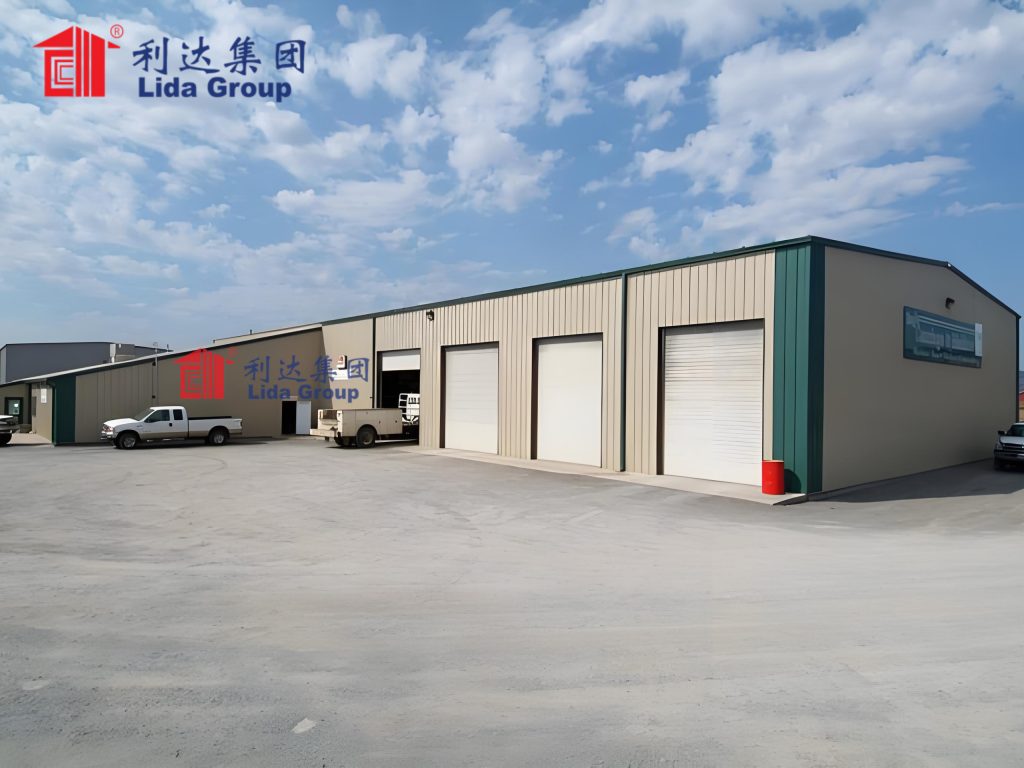
9. Market Impact and Industry Recognition
9.1 Market Growth and Global Reach
- Sales Volume: Annual sales of smart metal buildings have increased by 75%—from 1,200 units in 2019 to 2,100 units in 2024. This growth is driven by strong demand from industrial, logistics, and commercial clients.
- Global Expansion: Lida Group now operates manufacturing facilities in 7 countries (China, Germany, Brazil, Canada, the U.S., India, and the Netherlands) and serves clients in over 50 countries. This local manufacturing presence reduces delivery times by 40% and transportation costs by 35%—making its solutions more accessible to global clients.
- Market Share: The company now holds an 18% share of the global smart metal building market—up from 5% in 2019. According to a report by Grand View Research, Lida Group is projected to capture 25% of the market by 2028, thanks to its cost-effective approach and innovative technology.
9.2 Industry Awards and Recognition
- 2023 Smart Construction Innovation Award: Presented by the International Association for Smart Construction (IASC) for Lida Group’s IoT-enabled energy monitoring system, which was praised for “revolutionizing energy efficiency in metal buildings.”
- 2024 Green Building Leadership Award: Awarded by the World Green Building Council for the company’s sustainable smart metal buildings, which achieve LEED certification at 30% lower cost than traditional green buildings.
- 2024 Customer Satisfaction Award: Given by J.D. Power for Lida Group’s exceptional customer support, with 92% of clients reporting “high satisfaction” with the company’s smart systems and service.
- 2023 Industrial Innovation Award: Honored by the Manufacturing Technology Association for Lida Group’s automated smart component production line, which increases efficiency by 60% and reduces waste by 25%.
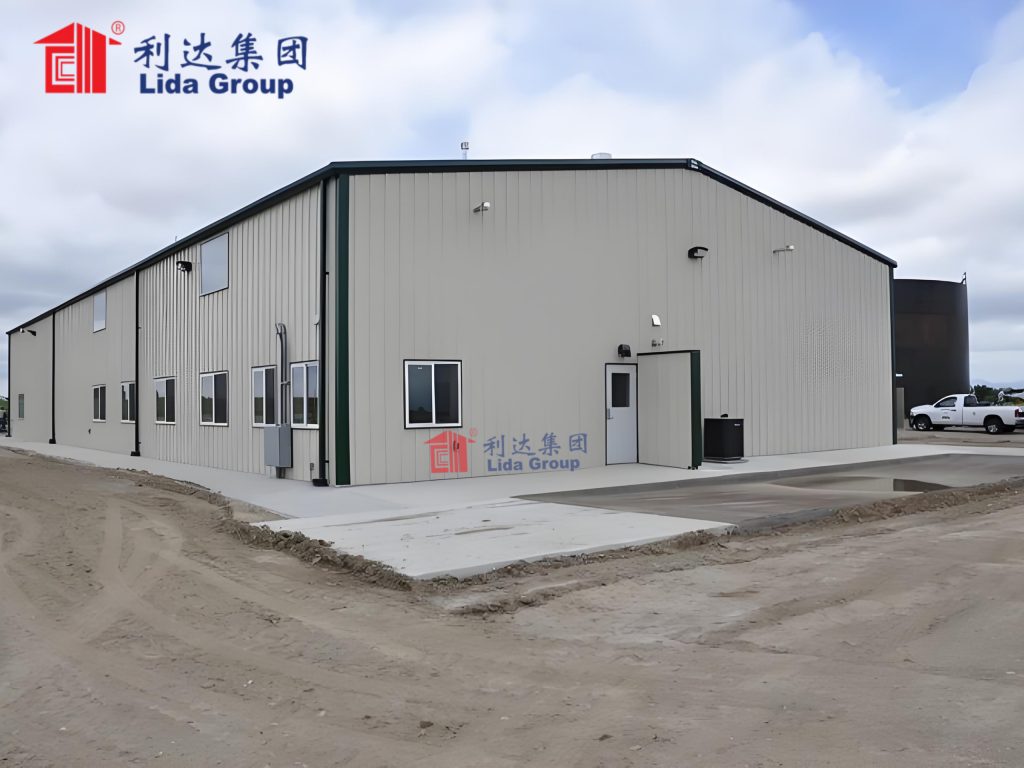
10. Conclusion: Lida Group’s Legacy—Smart Metal Buildings for a More Efficient, Sustainable Future
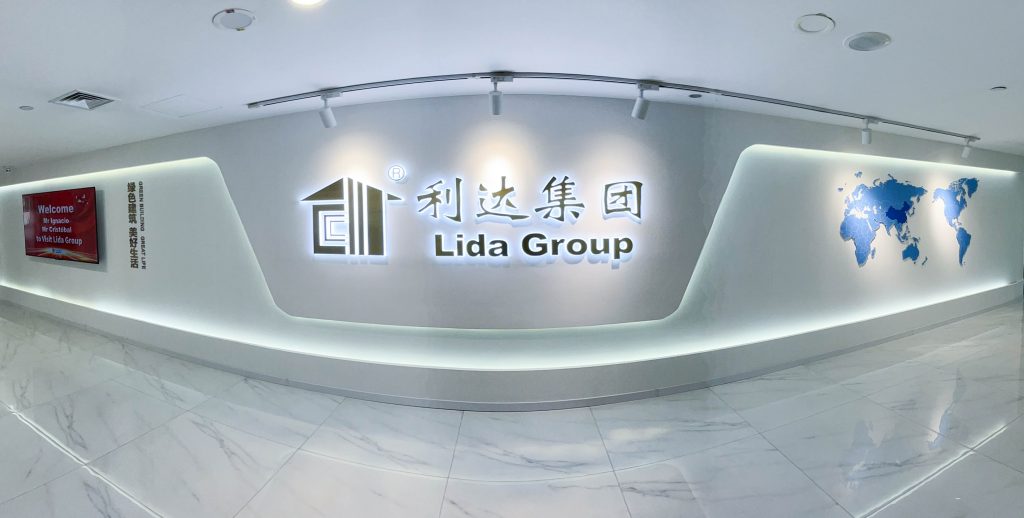
Related news
-
The Future of Accessible Construction: Lida Group's Free Design, Cost-Effective Steel Frame House Solutions
2025-10-28 14:11:57
-
The Future of Temporary Housing: Smart Design in Lida Group's Low-Cost Prefab Mobile House and Building Systems
2025-10-28 10:49:23
-
Lida Group Integrates Modern Amenities into Its Prefab Mobile House Designs Without Compromising on Low Cost
2025-10-28 10:33:03
contact us
- Tel: +86-532-88966982
- Whatsapp: +86-13793209022
- E-mail: sales@lidajituan.com


